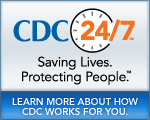This page is a historical archive and is no longer maintained.
For current information, please visit http://www.cy118119.com/media/
Media Advisory
Insufficient sleep among high school students associated with a variety of health-risk behaviors
For Immediate Release: September 26, 2011
Contact: CDC Online Newsroom
(404) 639-3286
WHAT
Almost 70 percent of high school students are not getting the recommended hours of sleep on school nights, according to a study by the Centers for Disease Control and Prevention published online by Preventive Medicine. Insufficient sleep is associated with a variety of health-risk behaviors, including physical inactivity, drinking alcohol, smoking cigarettes, fighting, and being sexually active.
WHEN
Monday September 26, 2011
Where
http://dx.doi.org/10.1016/j.ypmed.2011.06.020
Background
High school students participating in the 2007 national Youth Risk Behavior Survey were asked, “On an average school night, how many hours of sleep do you get?”?? Responses were categorized into insufficient sleep (less than 8 hours), and sufficient sleep (8 or more hours of sleep) as the recommended number of hours of sleep suggested for this age group by the National Sleep Foundation?? Researchers found that 68.9 percent of adolescent responders reported insufficient sleep on an average school night.?? Students who reported insufficient sleep were more likely to engage in the health-risk behavior than students who reported sufficient sleep. There was no association found between insufficient sleep and watching 3 or more hours of television per day.
Insufficient sleep was associated with the 10 health-risk behaviors examined below:
- Drank soda or pop 1 or more times per day (not including diet soda or diet pop)
- Did not participate in 60 minutes of physical activity on 5 or more of the past 7 days
- Used computers 3 or more hours each day
- In a physical fight 1 or more times
- Current cigarette use
- Current alcohol use
- Current marijuana use
- Currently sexually active
- Felt sad or hopeless
- Seriously considered attempting suicide????????????????????????????????????????????????????????????
“Many adolescents are not getting the recommended hours of sleep they need on school nights.?? Insufficient sleep is associated with participation in a number of health–risk behaviors including substance use, physical fighting, and serious consideration of suicide attempt,” said Lela McKnight–Eily, PhD, Division of Adult and Community Health.?? “Public health intervention is greatly needed, and the consideration of delayed school start times may hold promise as one effective step in a comprehensive approach to address this problem.”
About YRBS
National, state, and local YRBSs are conducted every two years among high school students throughout the United States. These surveys monitor health risk behaviors, including unintentional injuries and violence; tobacco, alcohol, and other drug use; sexual behaviors that contribute to unintended pregnancy and sexually transmitted diseases, including HIV infection; unhealthy dietary behaviors; and physical inactivity. These surveys also monitor the prevalence of obesity and asthma.
###
U.S. DEPARTMENT OF HEALTH AND HUMAN SERVICES
- Historical Document: September 26, 2011
- Content source: Office of the Associate Director for Communication, Division of News and Electronic Media
- Notice: Links to non-governmental sites do not necessarily represent the views of the CDC.
View Press Releases in
Get e-mail updates
To receive e-mail updates about this page, enter your
e-mail address:
Contact Us:
- Centers for Disease Control and Prevention
1600 Clifton Rd
Atlanta, GA 30333 - 800-CDC-INFO
(800-232-4636)
TTY: (888) 232-6348 - Contact CDC-INFO


